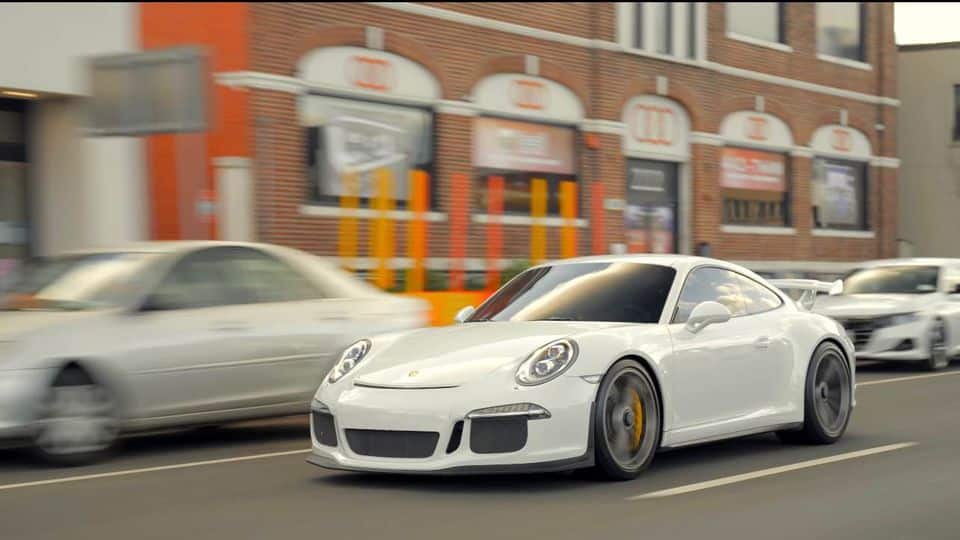The term “everyday supercar” is synonymous with Porsche. There’s no denying it. From somewhat humble beginnings, the 911 has simply evolved into one of the most recognisable silhouettes in the world.
The GT3 Moniker has become the quintessential pinnacle of a usable supercar in every sense of the word.
The introduction of the water-cooled motor also saw the introduction of the GT3 moniker in 1999. It was a homologation model to facilitate entry of the car into the FIA GT3 cup. It was racing-centric, and as such was devoid of all items adding unnecessary weight to the car. Minimal sound deadening, no rear seats or speakers, sunroof delete and air conditioning became an option.
The first 996 also introduced an engine known as the Mezger, based on the 962 and 911 GT1 race cars. Naturally aspirated, the engine had an external oil resevoir and pumped out a modest-by-today’s-standards 355bhp. Throw in some larger brakes and a lower re-tuned suspension system mated to light-weight wheels and an aero package, and the GT3 became the start of a new legacy.
Clubsport packages removed electronically adjustable seats for racing, fire-retarded variants, single mass fly-wheel, bolt in roll cage and driver’s racing harness.

In 2006, Porsche unveiled the second generation GT3; the 997. It evolved from a 3.6, 305kw engine which later evolved into a 400bhp 3.8 litre motor all the while retaining it’s naturally aspirated DNA. Modified active, electronically controlled suspension was introduced. The RS or Renn Sport nameplate was added which offered the ultimate track-going performance vehicle of the time. Later runs of the GT# featured a 4.0 engine, the largest in a 911 to date which put out just shy of 500bhp.
A further iteration of the GT3 came in 2013. The 991 was larger than ever before, featuring yet another new engine producing 469 bhp, rear wheel stearing and a Porsche Doppelkupplung dual clutch gearbox. The engine was largely unique from it’s 991 S donor, from the titanium connecting rods and forged pistons to the crankshaft and valve train. A manic 9,000rpm redline, light weight and sensational delivery made it the fastest yet, hitting 62mph (100kph) in just 3.5 seconds.
The 991 gains speed relentlessly and remains particularly stable at all speeds, delivering sheer performance numbers that are purely the stoping ground of true supercars in a way never achieved before. Whilst some relent the involvement of a manual box, there is no debating that the PDK system is simply the fastest, most controlled way to shift gears this side of telepathy.
Whilst the 996 is perhaps one of the most authentic, raw and honest greats around. In its time it was a symbol to the naysayers that although the 911 had to change, to evolve, Porsche never lost sight of the point of a 911. It is simply an all time great and perhaps the perfect blend of old and new.
The 997 simply built on these rock-solid footings and perhaps gives the last truly analogue GT3 experience, viciously toeing the line between the Old and New.
Whatever iteration of the GT3 you end up in, you will find a lightweight, razor edge drive that simply performs like few other cars on the road. Cruise leisurely for a weekend away before hitting the twisties and having the sort of driver engagement that you can often only dream of. They truly represent the ultimate blend in track prowess and daily practicality.








































































